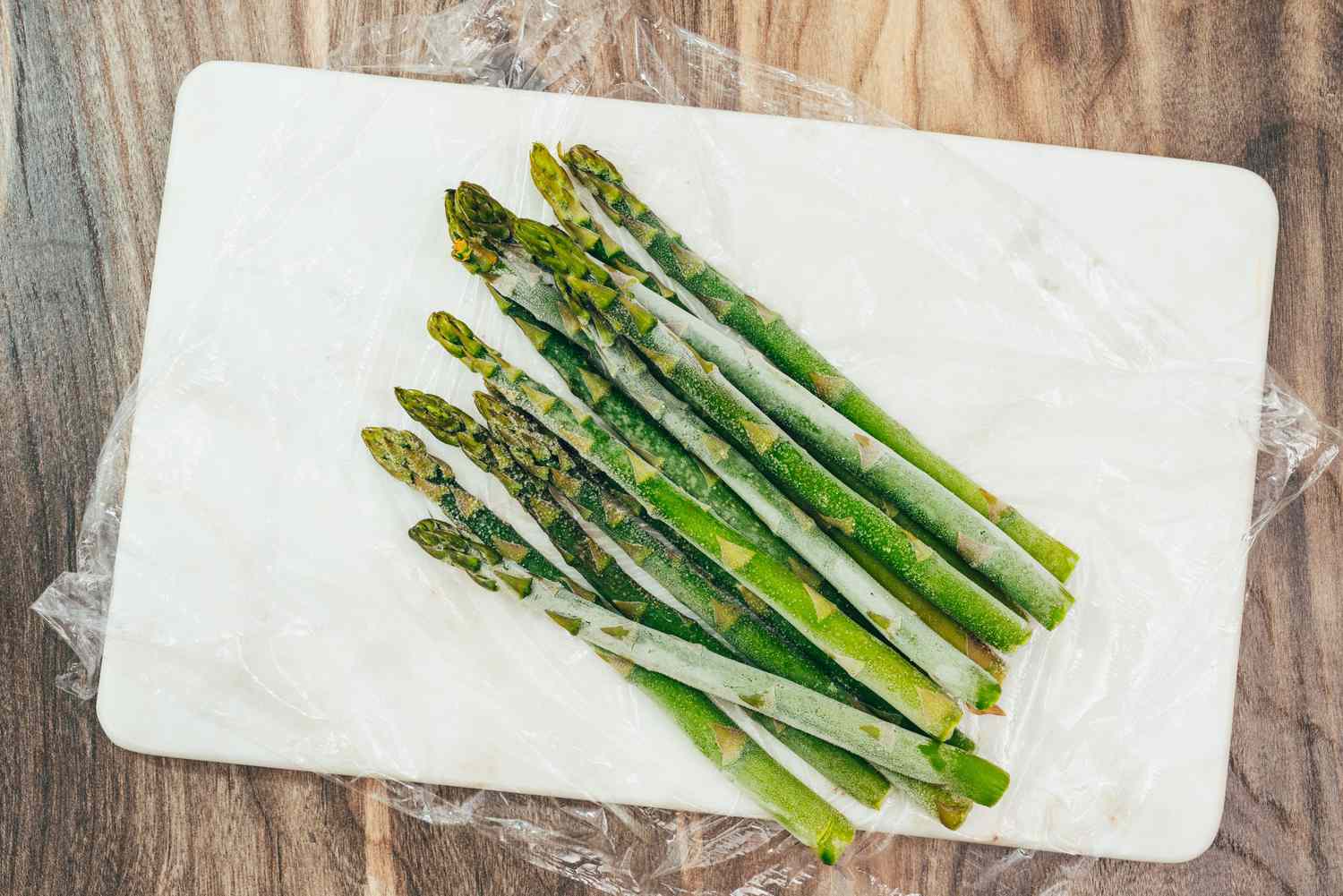

Articles
How To Store Asparagus In Freezer
Modified: December 6, 2023
Learn how to store asparagus in the freezer for longer shelf life and convenience. Read our articles for step-by-step instructions and tips.
(Many of the links in this article redirect to a specific reviewed product. Your purchase of these products through affiliate links helps to generate commission for Storables.com, at no extra cost. Learn more)
Introduction
Welcome to the world of frozen asparagus! Asparagus is a delicious and nutritious vegetable that can be enjoyed in a variety of dishes, from stir-fries to salads. However, asparagus has a relatively short shelf life, making it important to find ways to extend its lifespan.
Freezing asparagus is a fantastic option for preserving its vibrant color, crispness, and delicate flavor for an extended period. It not only allows you to enjoy this delectable vegetable year-round but also helps to minimize food waste.
In this article, we will guide you through the process of freezing asparagus step by step, ensuring that you achieve the best possible results. So let’s dive in and learn how to store asparagus in the freezer!
Key Takeaways:
- Preserve the vibrant color, crispness, and delicate flavor of asparagus by following the step-by-step freezing process, ensuring year-round enjoyment and minimizing food waste.
- Properly package, label, and store frozen asparagus to maintain its quality for up to 8-12 months, allowing for versatile usage in various dishes and eliminating the need to waste fresh produce.
Read more: How To Store Asparagus In The Freezer
Freezing Asparagus: An Overview
Before we jump into the nitty-gritty details of freezing asparagus, let’s take a moment to understand why and how this preservation method works.
When asparagus is frozen, the low temperature halts enzymatic activity within the vegetable, effectively slowing down the process of decay. Blanching, which involves briefly boiling the asparagus and then immediately immersing it in ice water, helps to preserve the color, texture, and nutritional value of the vegetable. Blanching also helps to kill any bacteria on the surface, ensuring that your frozen asparagus remains safe to consume.
Proper packaging is crucial to prevent freezer burn and maintain the quality of the asparagus. By removing excess air and using airtight containers or freezer bags, you can minimize the risk of ice crystals forming, which can lead to a deterioration in quality.
When stored correctly, frozen asparagus can last for up to 8-12 months without significant loss in quality. However, it is worth noting that the longer the asparagus is stored, the more it may lose its crispness, so it’s best to consume it relatively soon after freezing.
Now that we have a general understanding of the freezing process, let’s move on to the step-by-step guide on how to freeze asparagus effectively.
Step 1: Preparing the Asparagus
Before you can freeze asparagus, it’s important to properly prepare it. This involves washing the asparagus, removing any tough or woody ends, and cutting it into desired sizes.
To begin, give the asparagus a thorough rinse under cold running water to remove any dirt or debris. Gently pat them dry with a clean kitchen towel or paper towels.
The next step is to remove the tough or woody ends of the asparagus spears. You can do this by holding the asparagus near the base and bending the stalk until it naturally snaps. The point where it snaps is usually where the tender part begins, so you can discard the tough end.
If you prefer a more uniform size for your frozen asparagus, you can also cut the spears into smaller pieces. Some people prefer to chop them into bite-sized lengths, while others opt for longer spears. It ultimately depends on your personal preference and how you plan to use the asparagus later.
Once you have prepared the asparagus spears, you are ready to move to the next step – blanching them.
Step 2: Blanching the Asparagus
Blanching is a crucial step in the freezing process as it helps to preserve the color, texture, and flavor of the asparagus. It also helps to kill any bacteria that may be present on the surface of the vegetable.
To blanch the asparagus, start by bringing a large pot of water to a boil. You’ll want enough water to fully submerge the asparagus. While waiting for the water to boil, prepare a large bowl or basin with ice water. This will be used to quickly cool down the asparagus after blanching.
Once the water is boiling, carefully place the prepared asparagus spears into the pot. Allow them to cook for about 2-3 minutes, or until they become bright green and slightly tender. Be mindful not to overcook them as this can lead to mushy asparagus.
After the blanching time is up, use a slotted spoon or tongs to quickly transfer the asparagus from the boiling water to the ice water bath. This will stop the cooking process and help to retain the vibrant color and crispness of the vegetable.
Let the asparagus sit in the ice water for about 2-3 minutes, or until fully cooled. You can gently stir them around to ensure even cooling. Once cooled, remove the asparagus from the ice water and pat them dry with a clean kitchen towel or paper towels.
Now that you have successfully blanched the asparagus, it’s time to move on to the next step – cooling and drying.
Step 3: Cooling and Drying the Asparagus
After blanching the asparagus, it’s important to properly cool and dry them before freezing. This step helps to remove excess moisture and prevents ice crystals from forming, which can lead to freezer burn.
Start by draining the asparagus spears from the ice water bath. You can use a colander or simply lift them out with clean hands. Shake off any excess water and place the asparagus on a clean kitchen towel or a layer of paper towels.
Gently pat the asparagus dry with the towel, absorbing any remaining moisture. It’s essential to ensure that they are as dry as possible before moving on to the next step.
If you have a salad spinner, you can also use it to spin the asparagus to remove excess water. This can be an effective way to dry the asparagus quickly and more thoroughly.
Once the asparagus is dry, it’s time to proceed to the next step – proper packaging and labeling for freezing.
By following this step, you are well on your way to successfully freezing asparagus and preserving its quality for later use. So let’s move on!
To store asparagus in the freezer, first blanch it in boiling water for 2-3 minutes, then transfer to an ice bath to stop the cooking process. Once cooled, pat dry and place in a freezer-safe bag, removing as much air as possible before sealing. Label with the date and store in the freezer for up to 12 months.
Read more: How To Store Asparagus
Step 4: Proper Packaging and Labeling
Proper packaging is essential for maintaining the quality of your frozen asparagus. It helps to prevent freezer burn, which can affect the texture and flavor of the vegetable over time. Additionally, labeling your packages ensures that you can easily identify and use your frozen asparagus when needed.
The two most common methods of packaging for freezing asparagus are using airtight containers or freezer bags. Here’s how you can do it:
Airtight Containers:
- Choose a suitable airtight container that is freezer-safe. Glass or plastic containers with tight-fitting lids work well.
- Place the blanched and dried asparagus spears into the container, leaving a small space at the top to allow for expansion during freezing.
- Seal the container tightly to prevent any air from entering.
Freezer Bags:
- Use freezer bags specifically designed for freezing food. These bags are thicker and more durable than regular storage bags.
- Place the asparagus spears into the bag and gently press out any excess air before sealing the bag.
- For added protection, double-bagging the asparagus is recommended.
Once the asparagus is securely packaged, you’ll want to label each container or bag with the date of freezing. This will help you keep track of its freshness and ensure that you use the oldest packages first. You can also label them with the contents, such as “Blanched Asparagus,” for easy identification.
By properly packaging and labeling your frozen asparagus, you’re one step closer to enjoying its freshness and flavor even when it’s out of season. Now, let’s move on to the final step – storing the asparagus in the freezer.
Step 5: Storing Asparagus in the Freezer
Now that your asparagus is properly prepared, blanched, dried, and packaged, it’s time to store it in the freezer. Proper storage is essential for maintaining the quality and flavor of the frozen asparagus over an extended period.
Here are the steps to follow when storing asparagus in the freezer:
- Choose a spot in your freezer where the temperature remains consistent, ideally around 0°F (-18°C) or below. This will ensure optimal freezing and preservation of the asparagus.
- Place your sealed containers or bags of asparagus in a single layer on a flat surface, such as a baking sheet or tray. This will help them freeze quickly and evenly.
- Once the asparagus is partially frozen after a few hours, you can rearrange them and stack the containers or bags to save space in the freezer.
- Make sure to avoid overcrowding the freezer, as proper air circulation is necessary for maintaining a constant freezing temperature.
Asparagus can be stored in the freezer for up to 8-12 months. However, to ensure the best quality, it is recommended to consume the frozen asparagus within 6-9 months of freezing.
By following these steps, you can confidently store your asparagus in the freezer and have a supply of this nutritious vegetable ready for whenever you need it. Now let’s move on to some tips for maintaining the quality of your frozen asparagus.
Tips for Maintaining Quality
To ensure that your frozen asparagus retains its quality and flavor for as long as possible, here are some helpful tips:
- Properly package and seal: Ensure that your containers or freezer bags are airtight and properly sealed to prevent air and moisture from entering. This will help to minimize the risk of freezer burn and maintain the freshness of the asparagus.
- Remove excess air: When using freezer bags, try to remove as much air as possible before sealing. This helps to reduce the chance of ice crystals forming on the asparagus, which can lead to a loss of quality.
- Label and date: Always label your packages with the date of freezing. This will help you keep track of the freshness and use the oldest packages first.
- Store in small portions: Consider dividing the asparagus into smaller portions before freezing. This allows you to easily thaw and use only what you need, minimizing waste and ensuring the best quality.
- Avoid thawing and refreezing: Once you have thawed your frozen asparagus, it is best to use it within a short period. Refreezing can affect the texture and quality, so thaw only what you plan to use.
- Store away from strong odors: Asparagus can absorb odors from other foods in the freezer. To prevent this, store it in a separate area or use odor-proof freezer bags.
- Regularly check for quality: Periodically check your frozen asparagus for any signs of freezer burn, such as discoloration or ice crystals. Discard any packages that show signs of deterioration.
By following these tips, you can ensure that your frozen asparagus maintains its quality and remains a delicious addition to your meals. Now let’s move on to the final step – thawing and using your frozen asparagus.
Thawing and Using Frozen Asparagus
When it’s time to enjoy your frozen asparagus, it’s important to know the proper thawing methods to maintain its quality and flavor. Here’s how you can thaw and use your frozen asparagus:
- Refrigerator thawing: The best method for thawing frozen asparagus is to transfer the package from the freezer to the refrigerator. Leave it to thaw overnight or for about 24 hours. This slow thawing process helps to preserve the texture and flavor of the asparagus.
- Cooking from frozen: If you’re in a rush, you can cook frozen asparagus without thawing it. Simply add a couple of minutes to the cooking time specified in your recipe. This method works well for dishes where the asparagus will be cooked further, such as stir-fries or soups.
- Avoid microwaving: While it is possible to thaw asparagus in the microwave, it can lead to uneven thawing and potentially overcooking the vegetable. It’s best to use gentle thawing methods for asparagus to maintain its quality.
Once the asparagus is thawed, you can use it in various dishes. It can be steamed, roasted, grilled, or sautéed to bring out its natural flavors. Enjoy it as a side dish, add it to pasta dishes, salads, or use it as a topping for pizzas and omelettes.
Remember, thawed asparagus should be used within a few days and not refrozen. If you have leftover thawed asparagus, store it in the refrigerator and consume it as soon as possible for the best flavor and quality.
With these thawing and usage tips, you’re ready to make the most of your frozen asparagus and enjoy its delicious taste all year round. Now, let’s wrap up this article.
Read more: How To Store Cooked Asparagus
Conclusion
Congratulations! You have learned the step-by-step process of freezing asparagus and how to maintain its quality for an extended period. Freezing asparagus is a fantastic way to enjoy this versatile and nutritious vegetable even when it’s out of season.
By following the steps outlined in this article, from preparing and blanching the asparagus to proper packaging and storage, you can ensure that your frozen asparagus retains its vibrant color, crispness, and delicate flavor.
Remember to label your packages with the date of freezing and store them in a consistent and cold freezer to maximize the shelf life of the asparagus. Keep an eye out for any signs of freezer burn or deterioration and discard any packages that are no longer in optimal condition.
Thaw your frozen asparagus in the refrigerator for best results or cook it directly from frozen when you’re in a hurry. Incorporate the thawed asparagus into a variety of dishes, from soups to stir-fries, and savor its delicious taste.
With these tips and techniques, you can now confidently freeze asparagus and enjoy its goodness throughout the year. Say goodbye to wasting fresh asparagus and embrace the convenience of having it readily available in your freezer.
So, go ahead and stock up on asparagus when it’s in season, knowing that you can preserve its quality for future enjoyment. Happy freezing and bon appétit!
Frequently Asked Questions about How To Store Asparagus In Freezer
Was this page helpful?
At Storables.com, we guarantee accurate and reliable information. Our content, validated by Expert Board Contributors, is crafted following stringent Editorial Policies. We're committed to providing you with well-researched, expert-backed insights for all your informational needs.
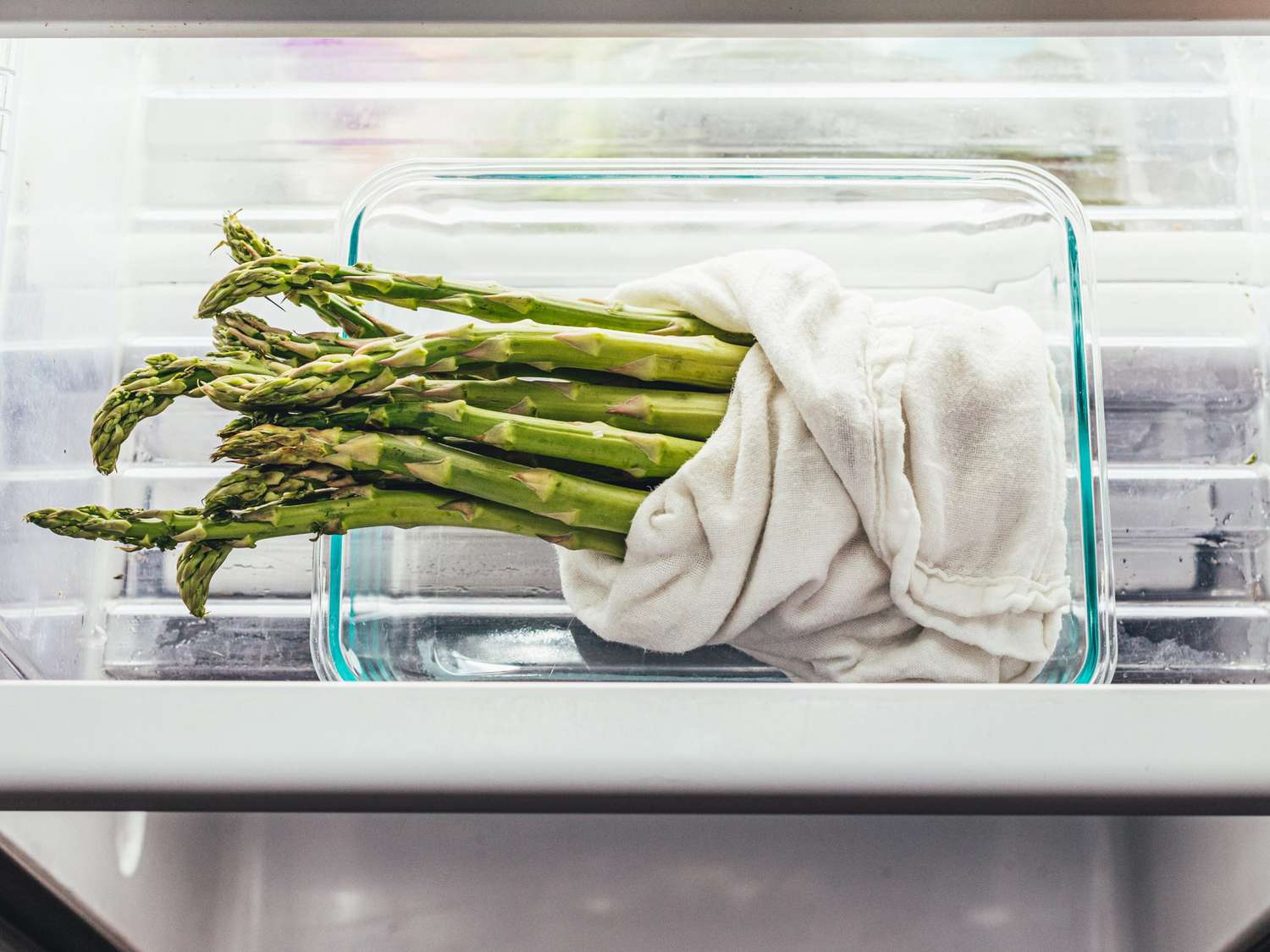

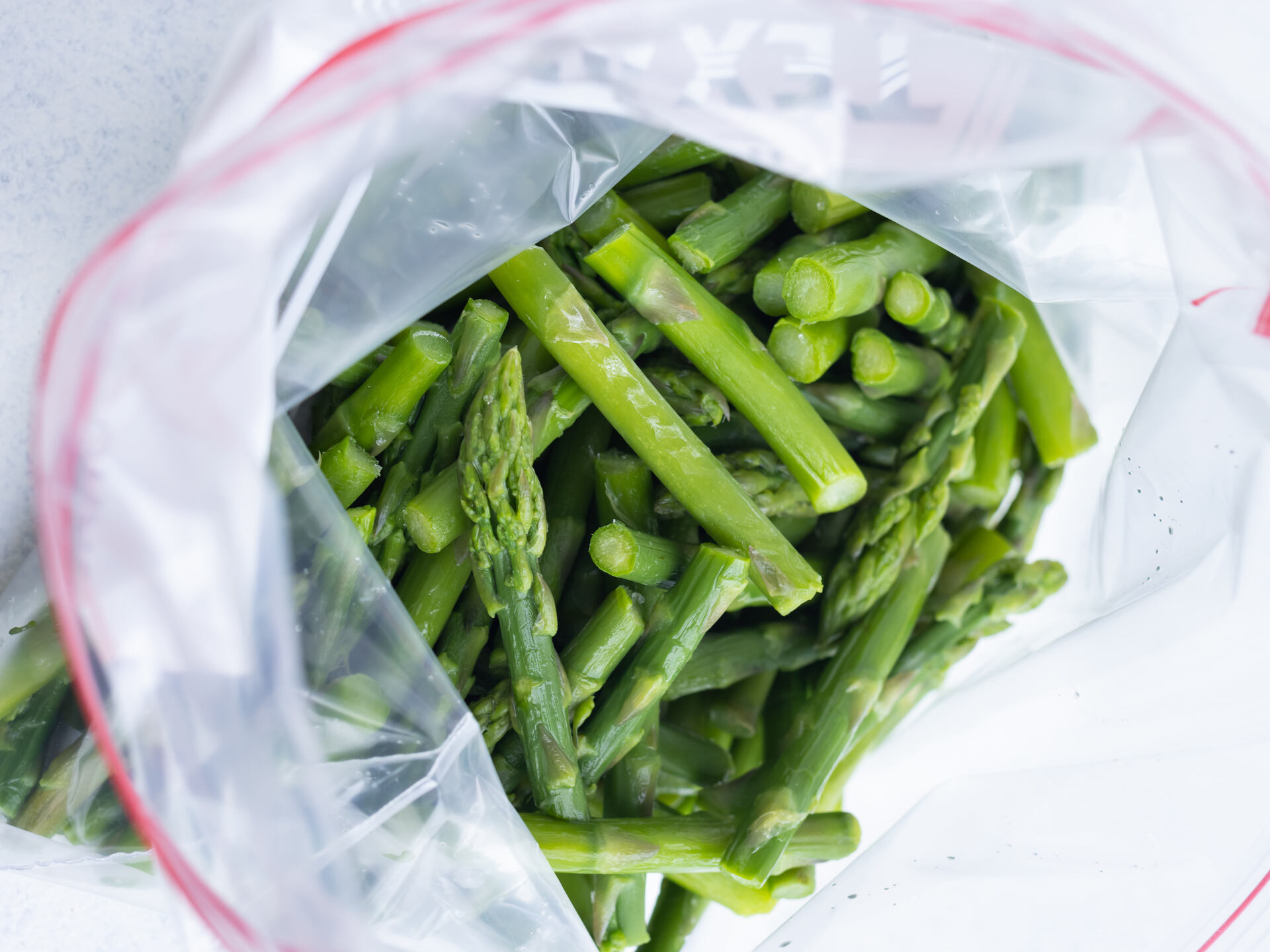

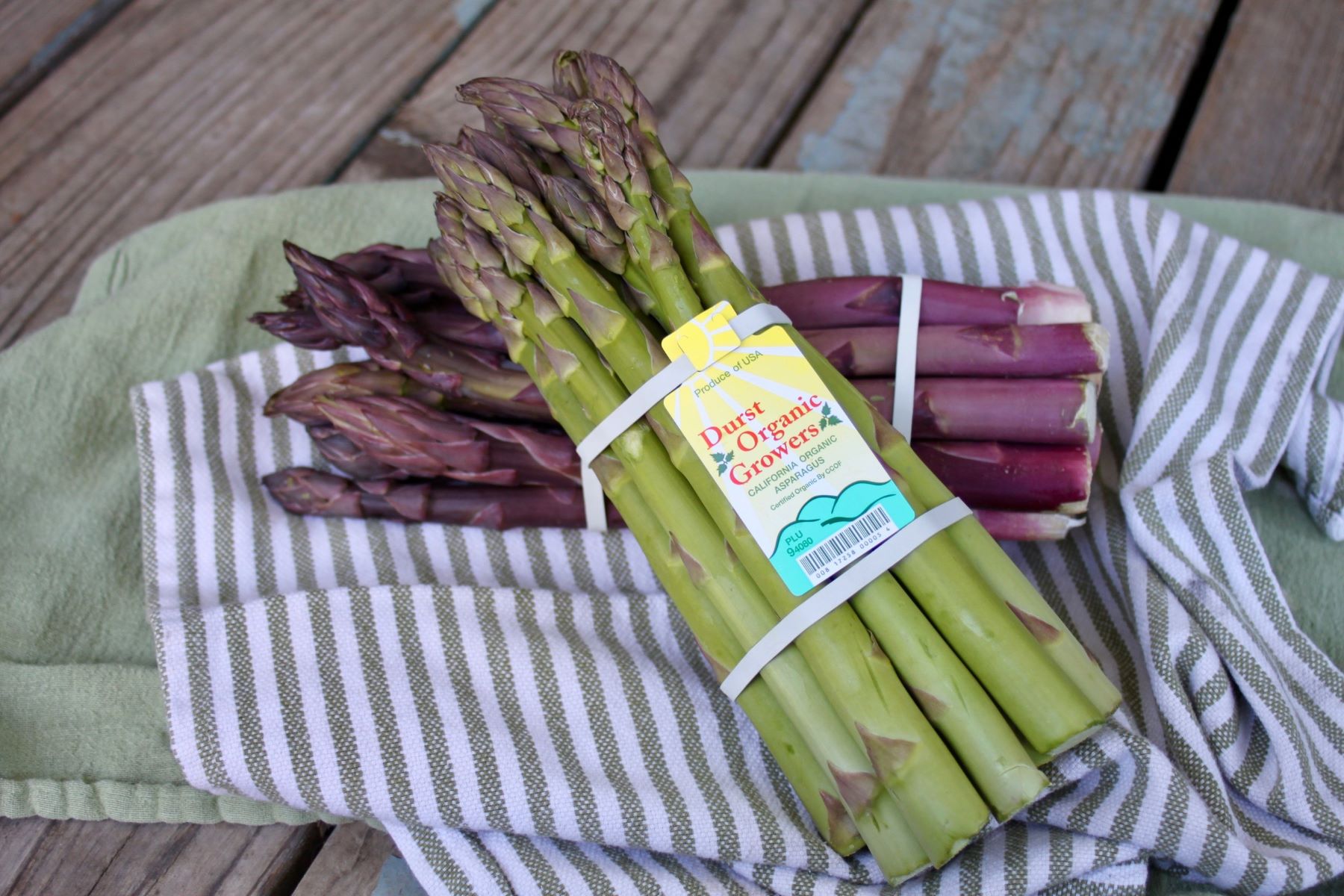
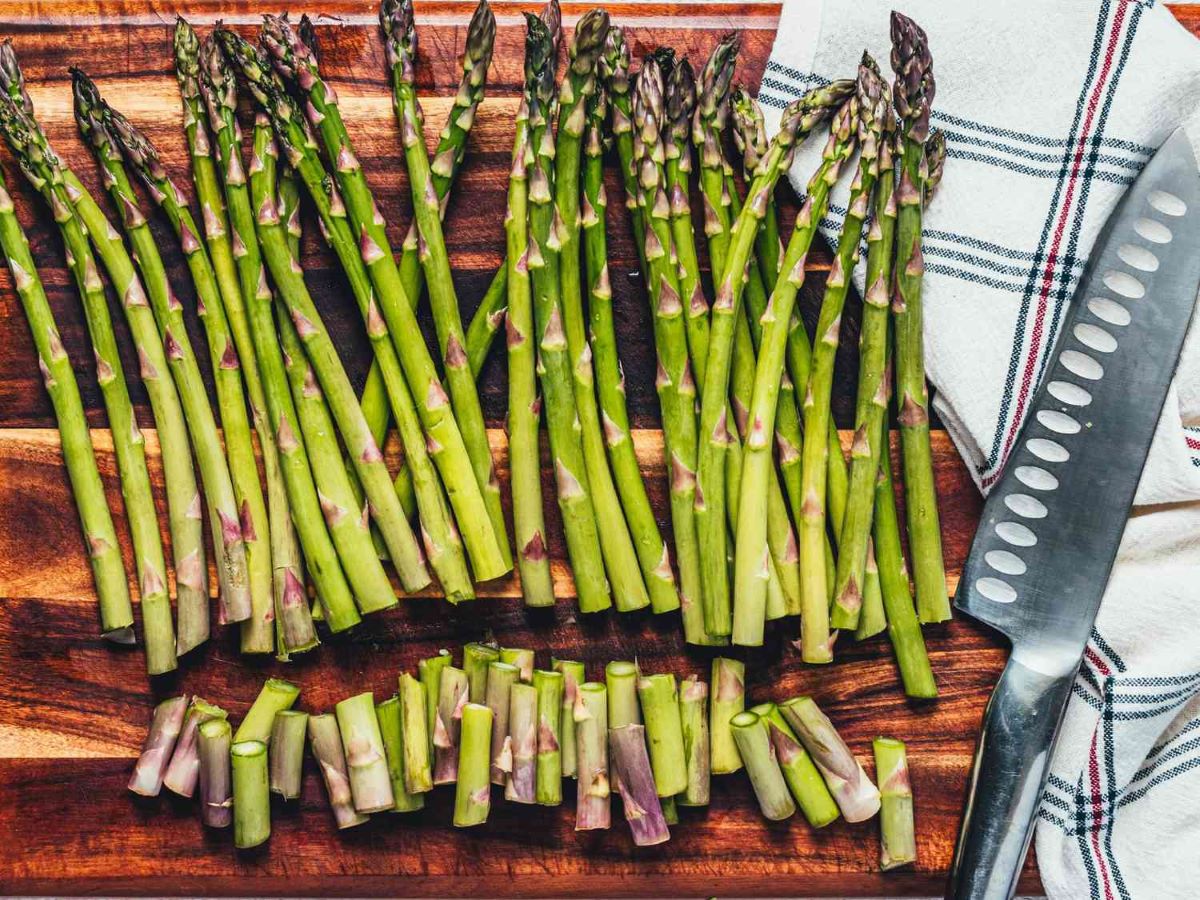

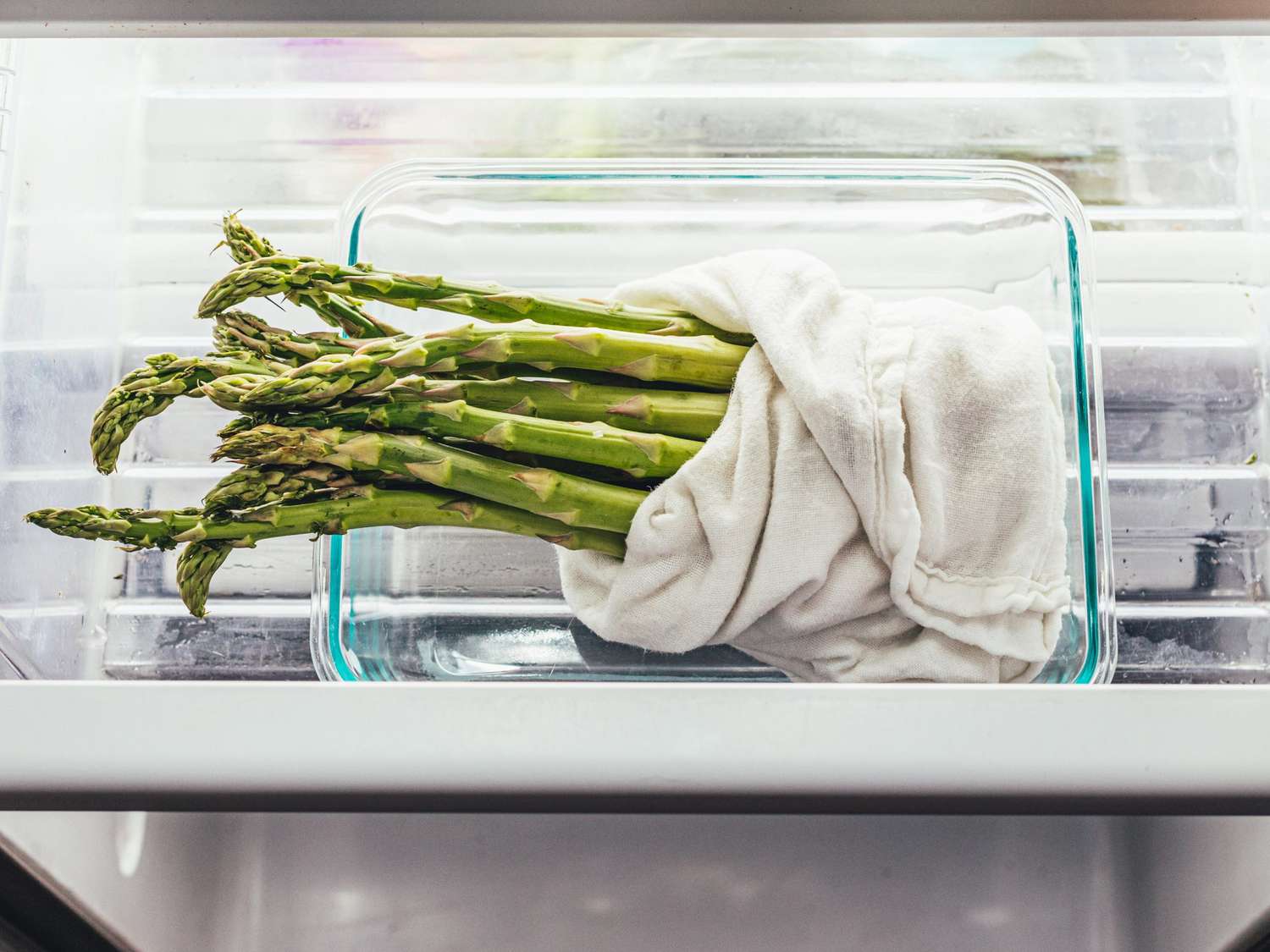
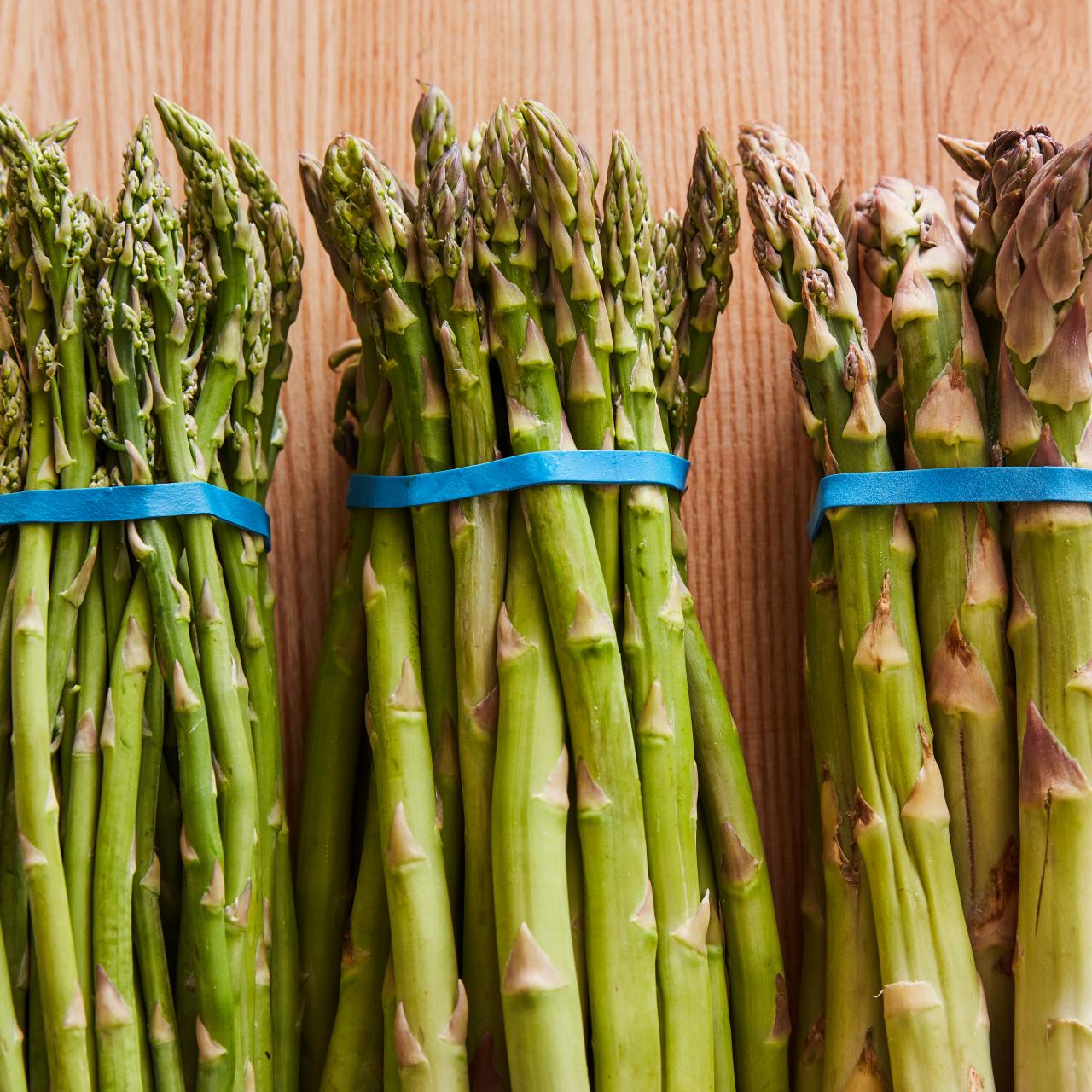
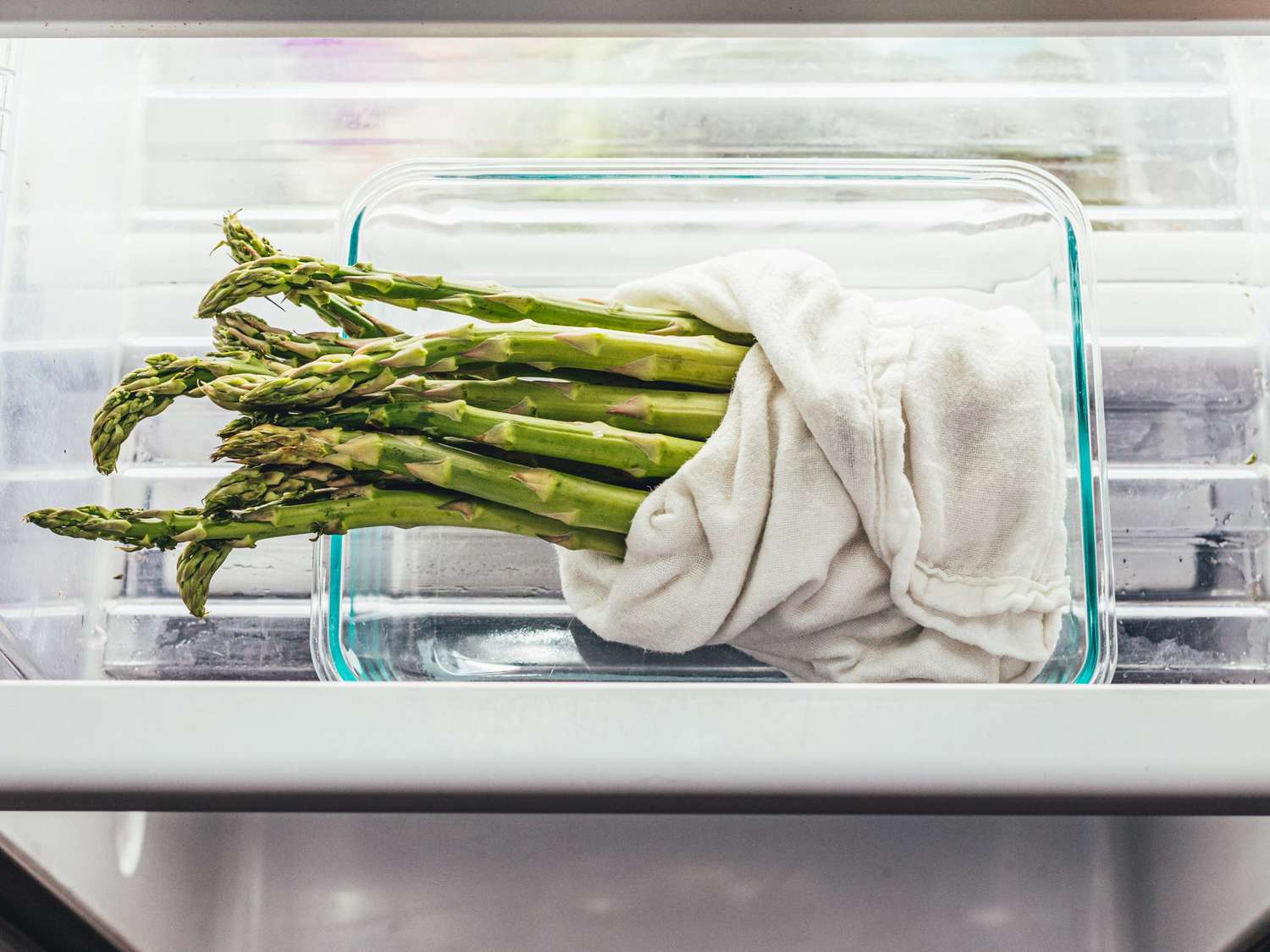
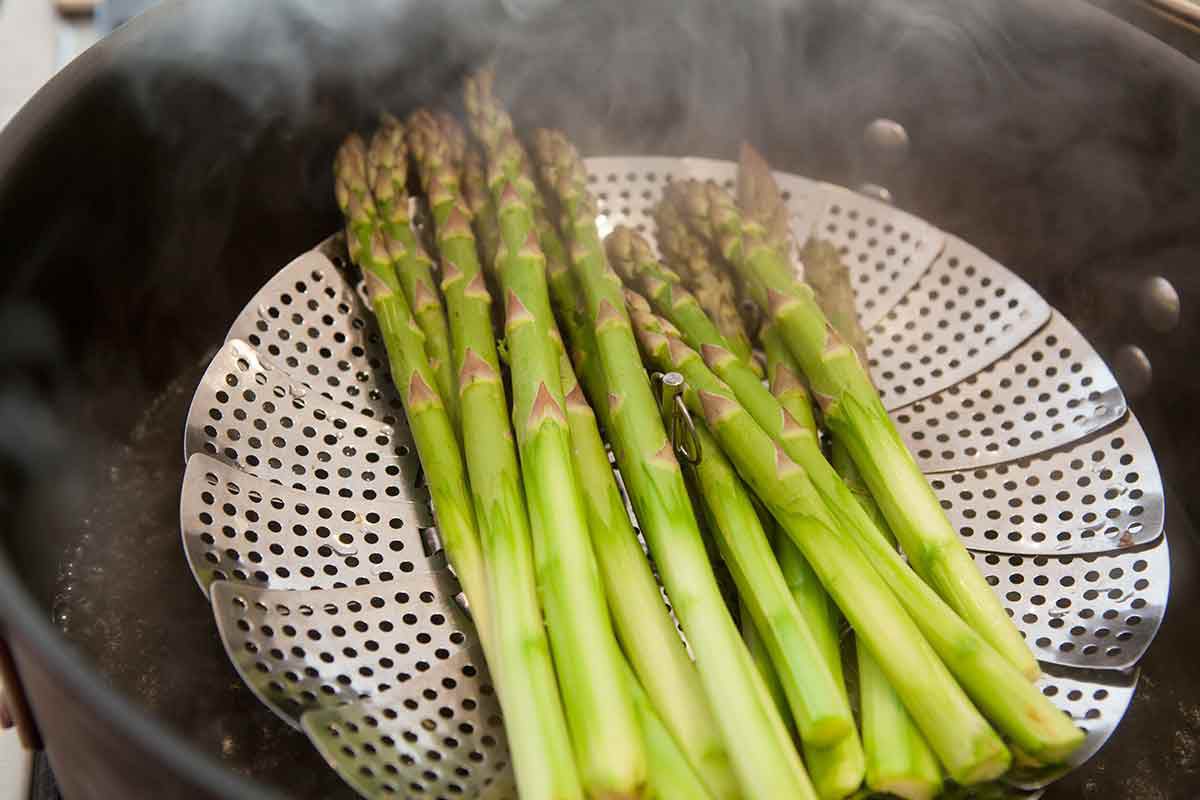
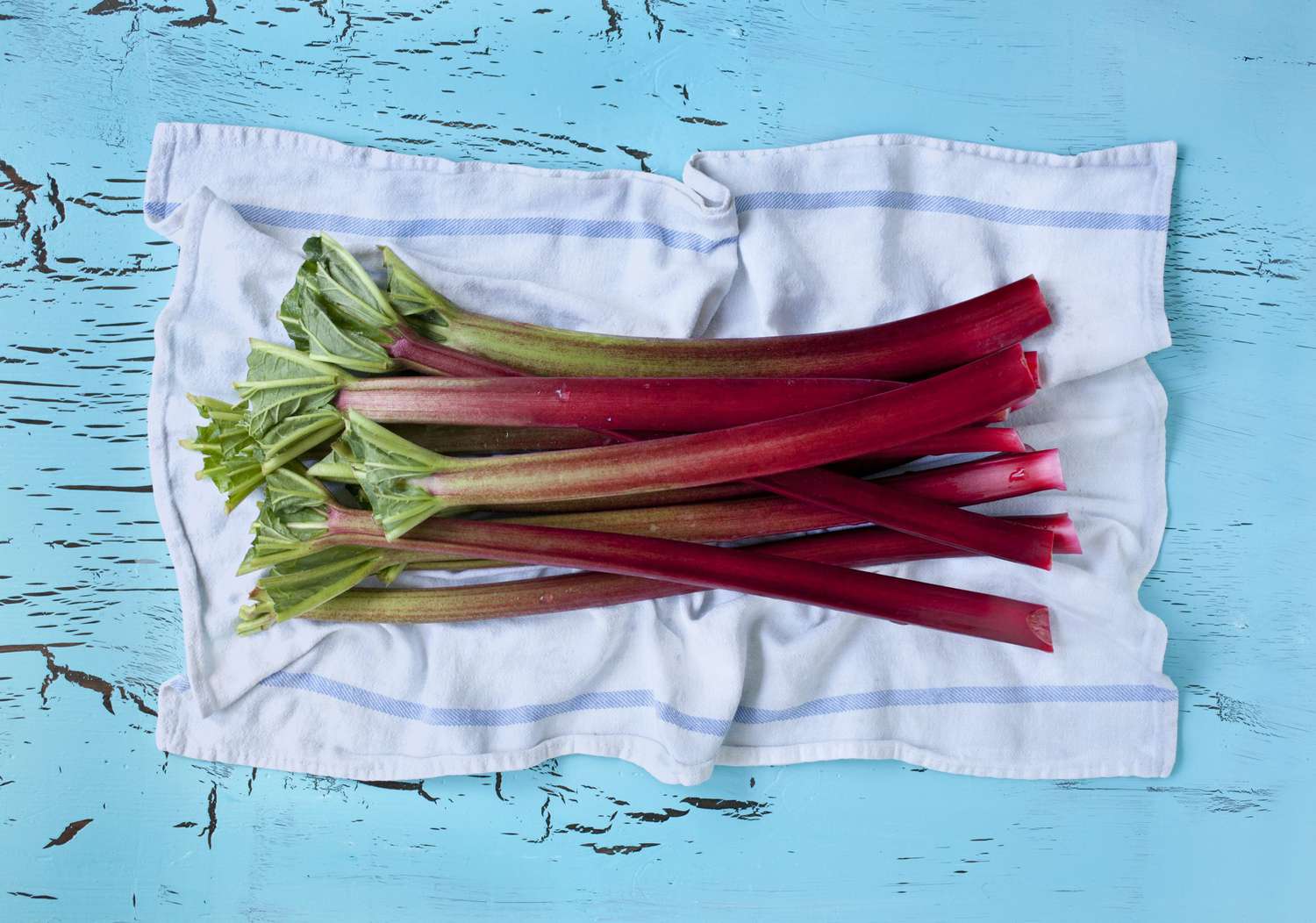


0 thoughts on “How To Store Asparagus In Freezer”